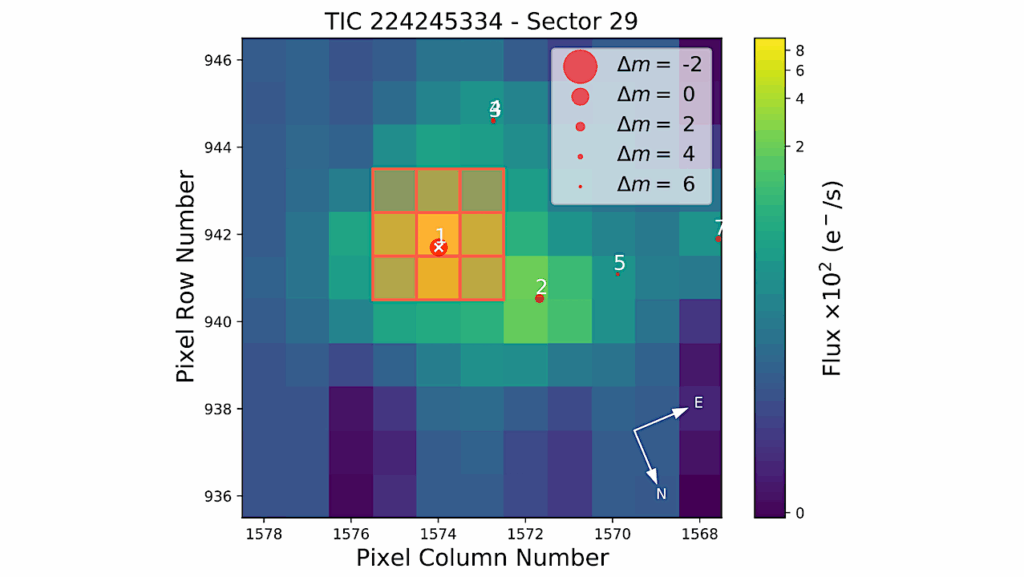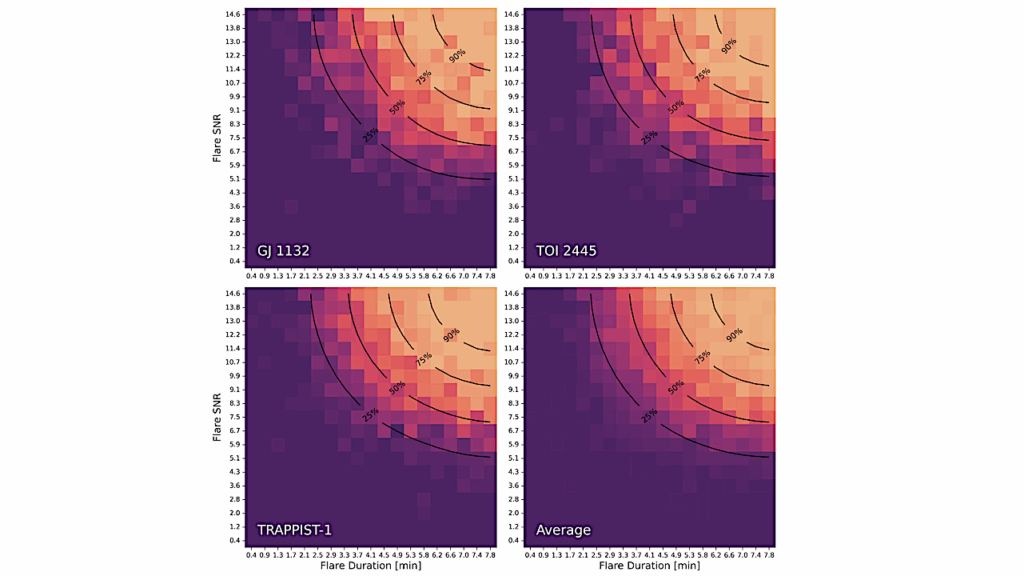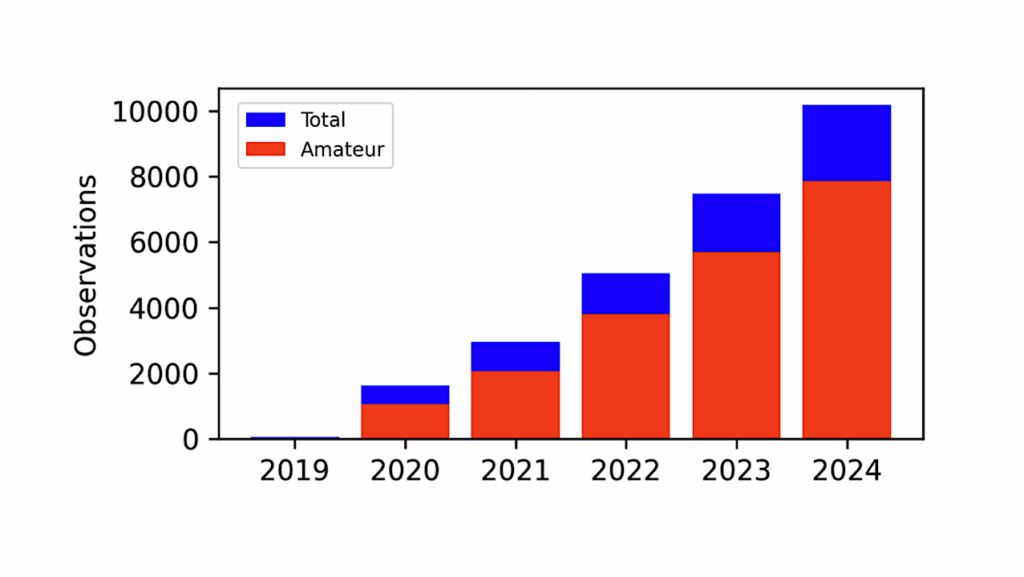Astrophysicists Publish Kepler Giant Planet Search, An Aid To “Figure Out Where To Find Life”
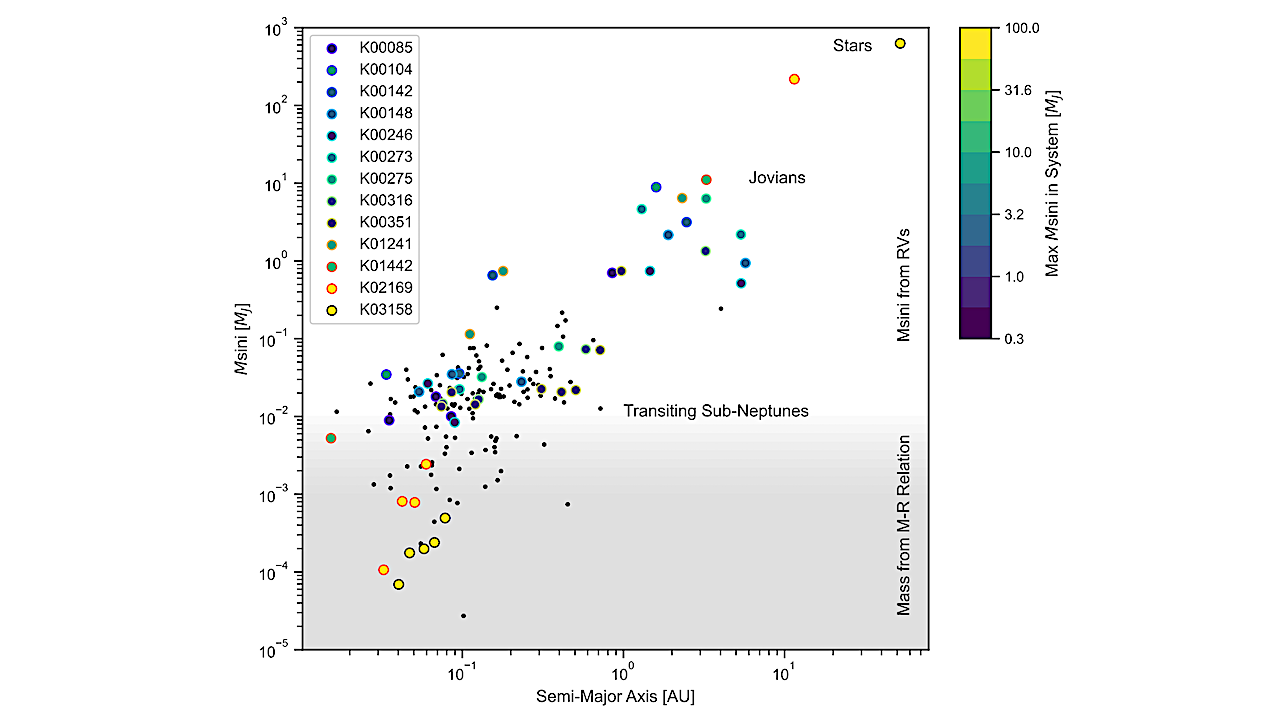
A team of astrophysicists led by Lauren Weiss, assistant professor in the Department of Physics and Astronomy at the University of Notre Dame, created the first-ever catalog of small, Earth-like planets with Jupiter-like siblings (planets that share the same star) — a critical component in the search for life elsewhere in our universe.
Forthcoming in the Astrophysical Journal, the Kepler Giant Planet Search took a decade to complete.
“This catalog is the first of its kind and an unprecedented opportunity to explore the diversity of planetary systems that are out there with things that are like the solar system, but not exactly the solar system, and it gives us a chance to rewrite the story of how the planets form,” Weiss said. “The science question that I’ve been trying to answer over the past decade is: Of the other small planets like Earth that are out there, which of them have Jupiter siblings? Because this might be an important characteristic to look for, if we want to figure out where to find life.”
Previous research over the past several years has singled out Jupiter as one of the reasons for life on Earth. During the formation of the solar system, Jupiter slingshotted rocky and icy debris and embryonic planets toward Earth’s current location. Jupiter still hurls debris in Earth’s direction today. The debris may have carried water to our planet intact, creating the oceans and later, fostering life.
Based on data collected from the W. M. Keck Observatory on Mauna Kea in Waimea, Hawaii, Weiss and collaborators recorded almost 3,000 radial velocities of 63 stars like our sun that host 157 known, small planets. The 157 small planets range from the size of Mars to the size of Neptune, and some of them have rocky surfaces that might be suitable for life. During the study, the team discovered 13 Jupiter-like planets, eight planets closer to the size of Neptune, and three companion stars.
Perhaps counterintuitively, large, gas-filled giant planets outside of our solar system are difficult to find because some common detection methods don’t work. The Kepler space telescope, which retired after nine years in 2018 after it ran out of fuel, had been an excellent tool for scientists to find small exoplanets that orbited close to their stars. It used the transit method, which measures tiny dips in the brightness of the companion star to indicate the presence of a planet as it orbits its star.
Gas giants, however, are usually much farther from their stars and don’t cross in front of them with any practical regularity for astronomers. Jupiter, for instance, takes 12 years to orbit the sun. Also, unlike planets close to their stars, distant planets often have slightly tilted orbits as seen from Earth, making the dips in brightness less prominent.
Weiss and collaborators used the radial velocity method, which uses Doppler spectroscopy. The team measured the “wobble” of a star as the waves appear to pull slightly closer and away from Earth based on the gravitational tug from a large, orbiting planet.
“Jupiters are large and they pull a lot on the stars we can measure. We can find them if we take many, many measurements over time, which is exactly what I had to do,” Weiss said. For every star in the sample, she and collaborators observed the Doppler shift of the star’s light waves for a minimum of 10 nights and in some cases up to hundreds of nights.
“It varies depending on the star,” she said, adding that “observing” the stars wasn’t done by directly looking through the telescope. Astronomers control the Keck telescope from remote observing stations worldwide, including at Notre Dame.
Though Weiss was excited about the discovery of the Jupiter-like planets, the catalog of Earth-and-Jupiter-like planetary systems is the aspect that will help astronomers in years to come. This paper, for instance, is the primary paper in the Kepler Giant Planet Search for which future papers will be based. Some will describe architectural patterns observed in planetary systems, the efficiency of detection of planets, and the joint occurrence of giant and small transiting planets.
“Probably the thing I’m most excited about is revisiting this story of how the Earth formed,” Weiss said. “Now that we have more information about what other kinds of planetary systems are out there, we’re looking for patterns, finding new discoveries, and these possibilities really excite me.”
In addition to Weiss, other collaborators on the study include astronomers from the University of California, Berkeley; the University of Southern Queensland, Australia; California Institute of Technology; IPAC-NASA Exoplanet Science Institute; University of California, Los Angeles; University of Chicago; University of the Pacific; University of Nevada, Las Vegas; Nevada Center for Astrophysics; Pennsylvania State University; University of California, Irvine; University of Hawaii; Princeton University; University of California, Riverside; University of California, Santa Cruz; Gemini Observatory/National Science Foundation’s NOIRLab; and the University of Kansas.
Contact: Jessica Sieff, associate director, media relations, 574-631-3933, [email protected]
The Kepler Giant Planet Search. I: A Decade of Kepler Planet Host Radial Velocities from W. M. Keck Observatory (older version) — astro-ph.EP
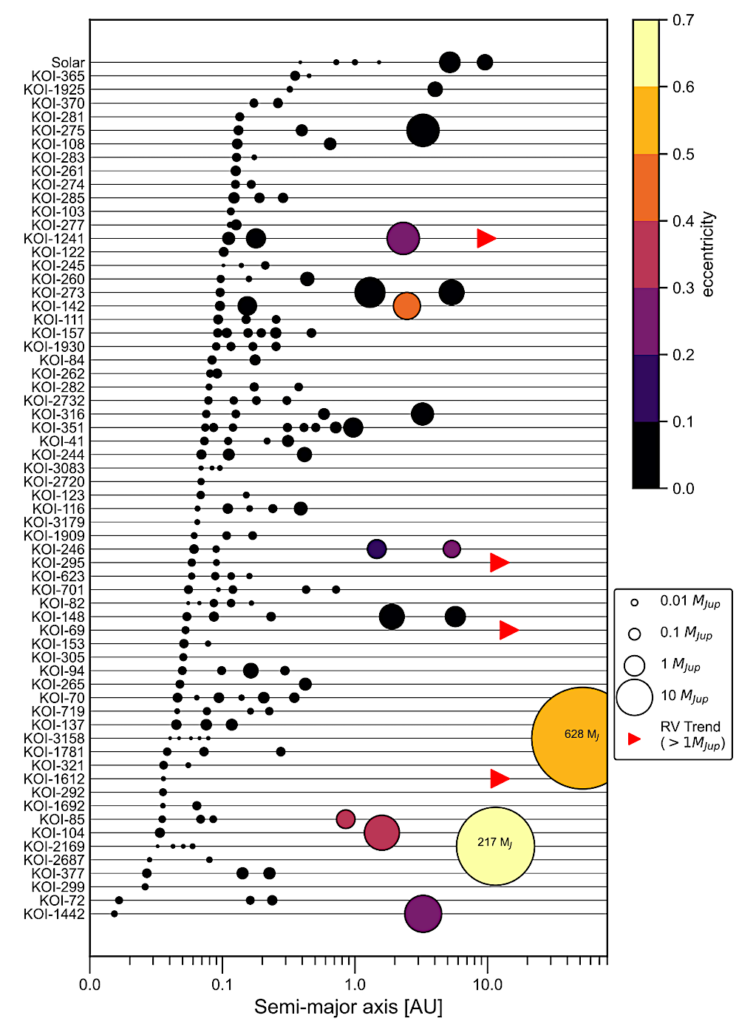
Architectures of the KGPS I planetary systems. Systems are ranked by the semi-major axis of the innermost known (transiting) planet. Point sizes scale with the square root of planet masses, M sin i’s, or mass estimates from the Weiss & Marcy (2014) mass-radius relationship. Colors correspond to eccentricities (if measured); low-mass planets are assumed to have circular orbits. — astro-ph.EP
Despite the importance of Jupiter and Saturn to Earth’s formation and habitability, there has not yet been a comprehensive observational study of how giant exoplanets correlate with the architectural properties of close-in, sub-Neptune sized exoplanets. This is largely because transit surveys are particularly insensitive to planets at orbital separations > 1 AU, and so their census of Jupiter-like planets is incomplete, inhibiting our study of the relationship between Jupiter-like planets and the small planets that do transit. To establish the relationship between small and giant planets, we conducted the Kepler Giant Planet Survey (KGPS). Using W. M. Keck Observatory HIRES, we spent over a decade collecting 2858 RVs (2181 of which are presented here for the first time) of 63 sun-like stars that host 157 transiting planets.
We had no prior knowledge of which systems would contain giant planets beyond 1 AU, making this survey unbiased in detected Jovians. In this paper, we announce RV-detected companions to 20 stars from our sample. These include 13 Jovians (0.3 MJ < M sin i < 13 MJ, 1 < a < 10 AU), 7 non-transiting sub-Saturns, and 3 stellar-mass companions. We also present updated masses and densities of 84 transiting planets. The KGPS project leverages the longest-running and most data-rich collection of RVs of the NASA Kepler systems yet, and will provide a basis for addressing whether giant planets help or hinder the growth of sub-Neptune sized and terrestrial planets. Future KGPS papers will examine the relationship between small, transiting planets and their companions.
Comments: It has come to my attention that there are significant concerns about the author list of this manuscript. It is very important to me that I honor everyone’s contribution to this work appropriately. Accordingly, I am revisiting the author list, with the goal of setting a standard for authorship that fairly acknowledges everyone’s contribution. — LMW
Lauren M. Weiss, Howard Isaacson, Geoffrey W. Marcy, Andrew W. Howard, Benjamin J. Fulton, Erik A. Petigura, Eric Agol, Daniel Fabrycky, Eric B. Ford, Daniel Jontof-Hutter, Miki Nakajima, James E. Owen, Leslie A. Rogers, Jason Rowe, Jason H. Steffen, Hilke E. Schlichting
Subjects: Earth and Planetary Astrophysics (astro-ph.EP); Solar and Stellar Astrophysics (astro-ph.SR)
Cite as: arXiv:2304.00071 [astro-ph.EP] (or arXiv:2304.00071v2 [astro-ph.EP] for this version)
https://doi.org/10.48550/arXiv.2304.00071
Focus to learn more
Submission history
From: Lauren Weiss [view email]
[v1] Fri, 31 Mar 2023 18:39:39 UTC (19,700 KB)
[v2] Fri, 7 Apr 2023 18:53:53 UTC (1 KB) (withdrawn)
Astrobiology


